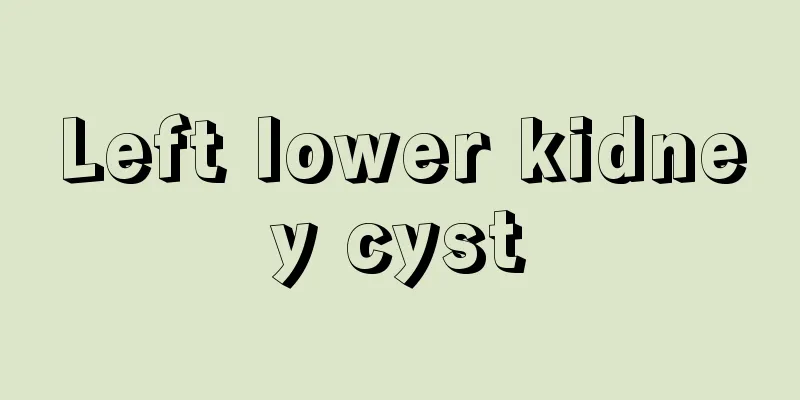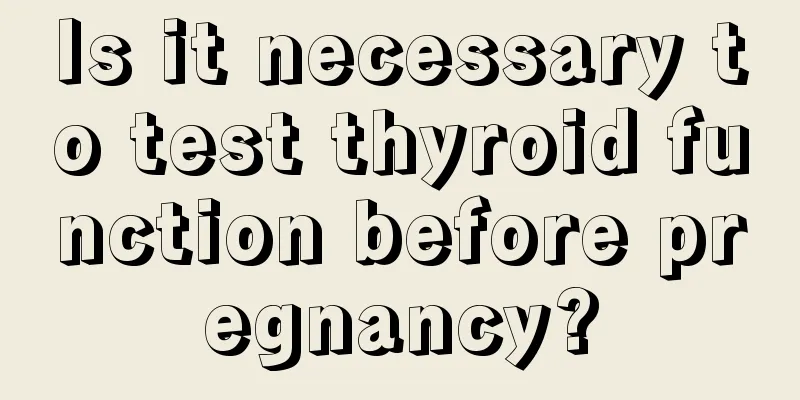Left lower kidney cyst

|
Left lower renal cyst is a kidney disease, which often occurs in the elderly. However, in the early stage of left lower renal cyst, there are generally no obvious symptoms in the human body. Only when the left lower renal cyst develops to a serious level will the patient feel it obviously. When treating left lower renal cysts, patients should also understand the causes of left lower renal cysts so that they can better prescribe the right medicine. 1. What is the left kidney cyst? Left renal cyst is the concentrated manifestation of renal cysts on the left kidney. Generally, left renal cyst refers to solitary renal cyst of the left kidney. The left kidney cyst is not inherited but acquired. Recent studies suggest that it may develop from renal tubular diverticula. With age, the number of distal tubules and collecting duct diverticula increases, and the incidence of left renal cysts also increases. 2. Symptoms of left kidney cyst: The vast majority of left renal cysts are asymptomatic. Some patients may experience the following symptoms due to the cyst itself, increased pressure inside the cyst, infection, etc. The symptoms of left kidney cysts include: 1. Abdominal mass: This is sometimes the main reason for patients to seek medical treatment. In 60-80% of cases, enlarged kidneys can be felt. The larger the kidneys, the worse the kidney function. 2. Hematuria: It may manifest as microscopic hematuria or macroscopic hematuria. The attacks are cyclical. Low back pain often worsens during an attack and can be triggered or aggravated by strenuous exercise, trauma, or infection. The reason for bleeding is that there are many arteries under the cyst wall. Due to increased pressure or combined infection, the blood vessels in the cyst wall are over-stretched and ruptured and bleed. 3. Discomfort or pain in the waist and abdomen: The reason is that the enlarged and expanded kidneys increase the tension of the renal capsule, stretch the renal pedicle, or cause compression of adjacent organs. In addition, the kidneys become heavy due to the high water content of polycystic disease, and they fall and pull, which can also cause low back pain. The pain is characterized by dull pain, fixed on one or both sides, and radiating to the lower part and lower back. If there is intracystic bleeding or secondary infection, the pain will suddenly intensify. If the urinary tract is blocked by stones or blood clots after bleeding, renal colic may occur. 3. What should I do if I have a left kidney cyst? Generally, left kidney cysts smaller than 5 cm do not need to be treated. Some small or relatively rare single kidney cysts do not cause any harm and are not very serious. Many people have some. In this case, only follow-up observation is needed. However, if the cyst is too large, it may compress the kidney, or adjacent organs or even blood vessels, then surgical treatment is required. 4. How long does a left kidney cyst last? Many patients with left kidney cysts have this question in their minds. In fact, patients with left kidney cysts can live like normal people as long as they control the growth of the cyst. In addition, the left kidney cyst is a benign tumor. As long as it is discovered early and treated early to control the disease, the prognosis is good and it will not affect life expectancy. Adult polycystic kidney disease is a congenital hereditary disease. Although adult polycystic kidney disease cannot be cured, it progresses to uremia very slowly. The average life expectancy of patients is around 50 years old. After the onset of symptoms, the average survival time is 10 years, but there are great individual differences, and there are also many people who have no clinical manifestations throughout their lives. Even in the end-stage of uremia, alternative therapies can be implemented, including hemodialysis, peritoneal dialysis, and kidney transplantation. The longest survivors of the three have exceeded 10 years. Acquired left renal cyst mainly occurs after uremia or dialysis treatment. It has nothing to do with age, but is related to the duration of hemodialysis. The length of life depends on the severity of the disease. |
<<: There is a cyst on the right kidney
Recommend
Symptoms of heavy dampness, it is important to detect and treat dampness early
If there are some abnormal symptoms in the body, ...
Anterior spinal artery syndrome
Anterior spinal artery syndrome is actually a dis...
These 5 types of men are more likely to lose their anterior "gland"! I hope you know
At present, the number of men suffering from pros...
Stage 1c ovarian cancer does not affect life expectancy
Stage 1c ovarian cancer may not directly affect l...
What should we pay attention to in preventing lung cancer? Pay attention to these things in preventing lung cancer
Nowadays, with the increasing incidence of lung c...
How to effectively treat acute cystitis
Acute cystitis affects and troubles many people. ...
What are the consequences of delayed treatment of liver cancer? Several key factors to stay away from liver cancer
What are the consequences of delaying the treatme...
Is rusty iron pan harmful to human body?
Most rusted iron pans will not cause harm to the ...
What are the causes of breast cancer? Pay more attention to the 6 common causes of breast cancer
How is breast cancer caused? How to prevent breas...
How to stop bleeding after radical surgery for bladder cancer?
How to stop bleeding after radical surgery for bl...
What to do with advanced liver cancer to prolong life Interventional treatment of advanced liver cancer improves survival rate
What should I do if I have advanced liver cancer?...
Who should not eat hibiscus flowers
I believe that many people do not know that hibis...
Treatment methods for acne, Chinese medicine acne treatment method
Acne is also known as acne or blackheads. It is a...
Is it normal to have small blood spots on lean meat?
When shopping for lean meat, if you find some sma...
Can green tea prevent stomach cancer?
Recent studies have shown that for women, regular...









